
MEMORY AND REVOLUTION IN MEXICO CITY - Mexico City Streets Social movements claim public space in one of the largest cities in the Americas. by David Bacon The Progressive - October 9, 2023 https://progressive.org/latest/memory-and-revolution-mexico-city-bacon-231009/ http://davidbaconrealitycheck.blogspot.com/2023/09/fighting-for-public-space-mexico-city.html 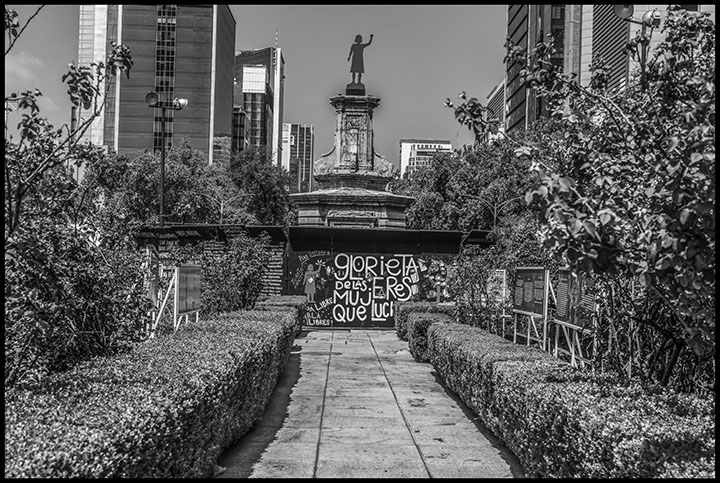 Every morning, taxi drivers in Mexico City weave through traffic while tuning in to radio announcements of marches and demonstrations. Protests-colorful, loud, and insistent-are a constant presence throughout the metropolis of 8.5 million people. Over the years, it has been easy to step out of a downtown hotel in the morning, walk a block up to the Reforma (Mexico City's central avenue), and join the crowds with my camera. Much of the political life of the city is found in the street, and its social movements use public space often as a reminder of earlier protests and actions that gave form to Mexican politics. Those politics reflect an interplay between street protest and a more formal electoral process. Today, following a new, more open procedure for choosing presidential candidates (which is itself, in part, a product of peoples' movements), Mexico's governing party Morena (the Movement for National Regeneration) chose the city's mayor, Claudia Sheinbaum, as its candidate for the presidential election next June. Given the popularity of Morena and its founder, current President Andres Manuel Lopez Obrador, she is virtually certain to be elected. Sheinbaum is an engineer, a skilled politician, and the daughter of a leftist family. If elected, she will be Mexico's first female head of state, joining a growing number of women who head or have headed governments throughout the Americas (notably not including the United States). It's not just women in office changing politics-the country's Supreme Court recently struck down the prohibition of abortion. Women have been protesting abuse and gender-based violence for years, especially since the disappearance of scores of young maquiladora workers in Juarez, on the U.S.-Mexico border. It's no surprise, then, that women have taken over a traffic island in the middle of the Reforma to highlight these attacks and demand justice. A metal, violet-colored silhouette of a woman with her fist in the air rises above the corrugated walls of a kiosk. The surfaces have first been painted back, and then the names of women murdered or subjected to repression have been hand lettered in white. The number of names is extraordinary. Each panel of the kiosk emphasizes repression directed towards a particular group: One displays the names of women journalists; another lists Indigenous activists. It includes Bety Cariño, ambushed and killed in 2010 as she brought support to an autonomous Triqui town in Oaxaca, and Digna Ochoa, a defender of the poor, shot in her Mexico City office in 2001. A third panel memorializes the forty-nine children burned to death in the ABC nursery in 2009. On paper banners hung on strings at the edge of the curb are the words of ordinary women, giving accounts of abuse: "Because of fear, because of reprisals, because I was not protected," or "Because he was family, I was afraid of what they'd think of me, and when I told my mother, and she told his mother, they said I'd probably provoked him," or simply, "He scares me." 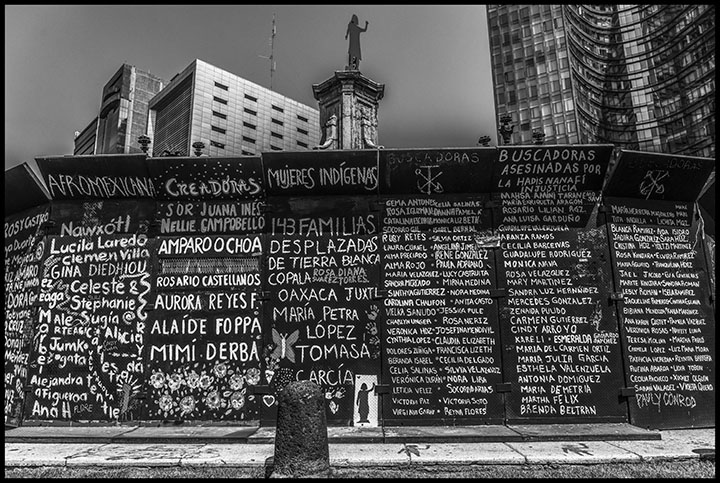   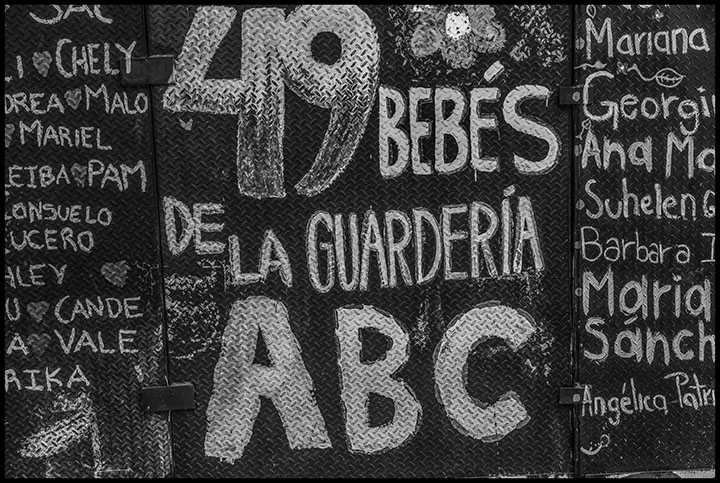 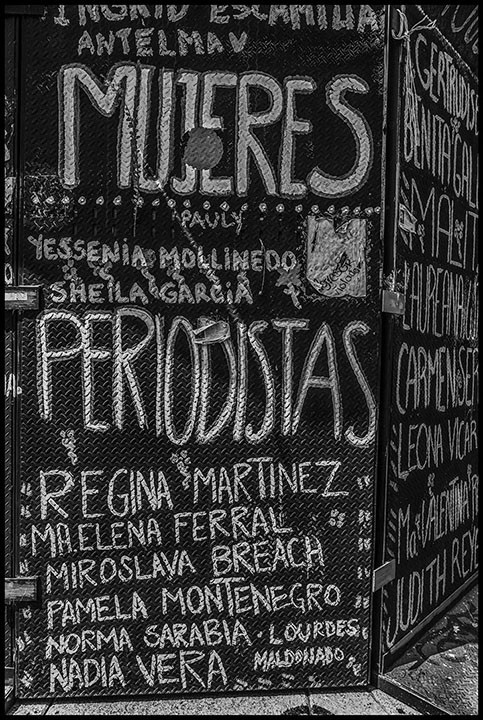 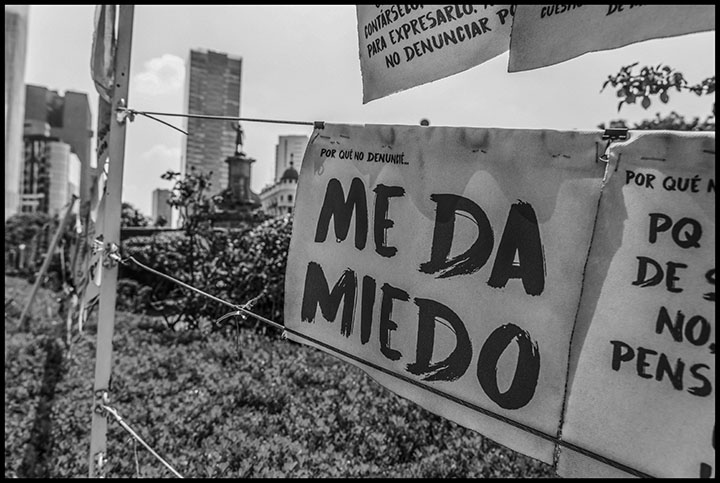 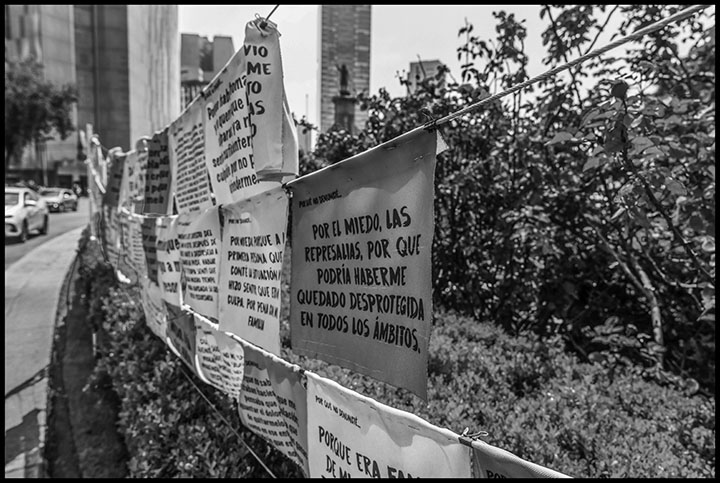 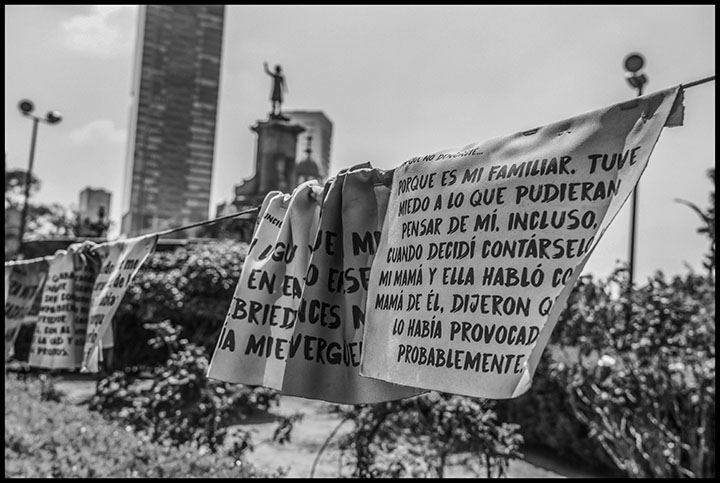 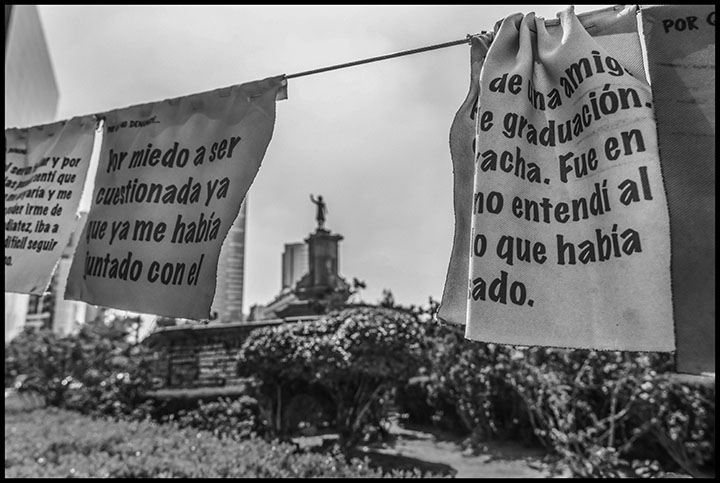 Further up the Reforma is another permanent memorial. Not far from the guarded facade of the U.S. Embassy, and the buildings housing rich banks and government offices, is the Ayotzinapa encampment. Nine years ago, students set out in commandeered buses from their teachers' training school in Guerrero to the annual march commemorating the death of hundreds of students in the city's Tlatelolco Plaza in 1968. Forty-three Ayotzinapa students were seized and disappeared. Through those nine years, the investigations into the perpetrators have reached into the highest levels of the government, especially the armed forces. While previous administrations tried to pretend the students were simply victims of a narcotics cartel, it has become clear that there were deep political reasons for their murder. The Ayotzinapa school itself has been the target of the Mexican right for its history of training rural teachers. The school gave students a radical and Marxist analysis of their country, preparing them to be social organizers, even revolutionaries. It followed the tradition of one of its best known professors, Lucio Cabañas, who took up arms against the Mexican government in the 1960s. Since 2014, new generations of Ayotzinapa students have kept up pressure on the government by coming to the capital every month. They have built a permanent camp on the Reforma, with cabins and shelters for sleeping and space for meetings. Surrounding it are silk-screened images of the disappeared students, strung in rows on the shelter's walls, facing the traffic. This planton, or encampment, even boasts a small library, cared for by Martin, one of a group dedicated to maintaining the space. On September 28 the families of the 43 disappeared lifted another planton they'd maintained in front of the Military Camp #1 in Mexico City, after a new report from the Commission for Truth and Access to Justice authored by Undersecretary for Human Rights Alejandro Encinas. Mexican President Andres Manuel Lopez Obrador stated, “We have not abandoned the case, we are going to continue investigating it for the mothers and the fathers, for justice and also for our convictions." He gave a new order to the army to release files on the case it had withheld, including documentation of the personal involvement of past President Enrique Peña Nieto in covering up the crime. Public space is contested space for protest movements in any city. In some, any effort to create a permanent presence is greeted with fire hoses, arrests, and worse. Mexico City has its own history of trying to sweep social movements out of sight. But a tradition of popular protest is equally strong, including the planton. It has popular recognition, which the government must take into account. 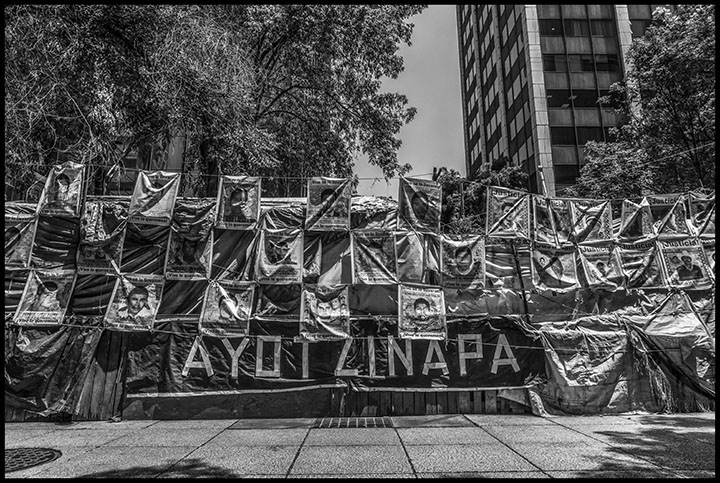 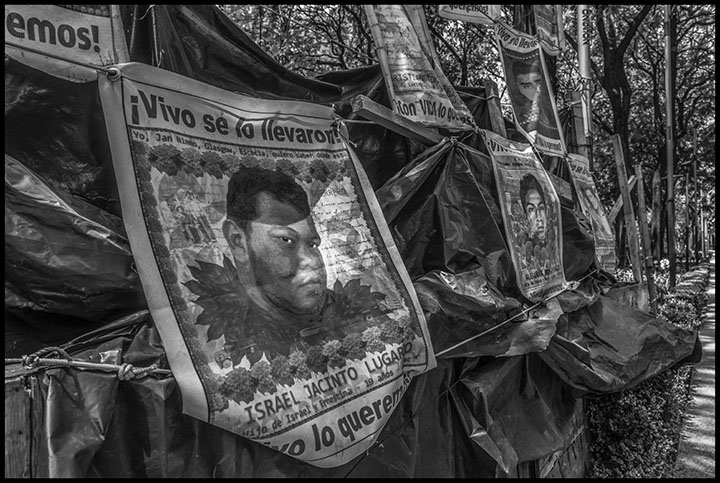 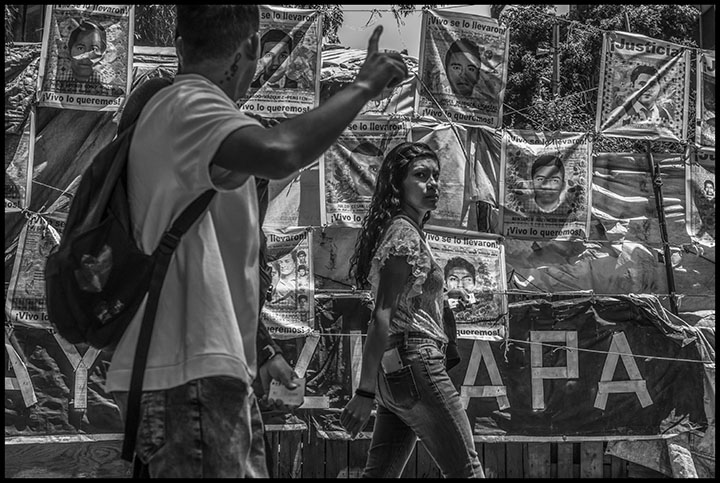 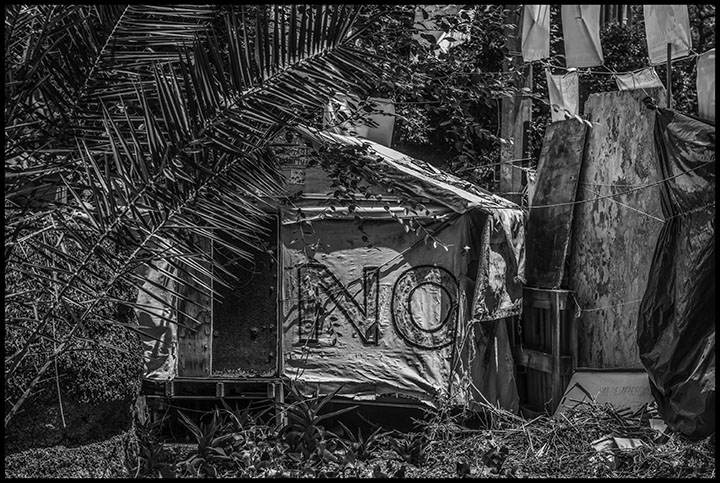 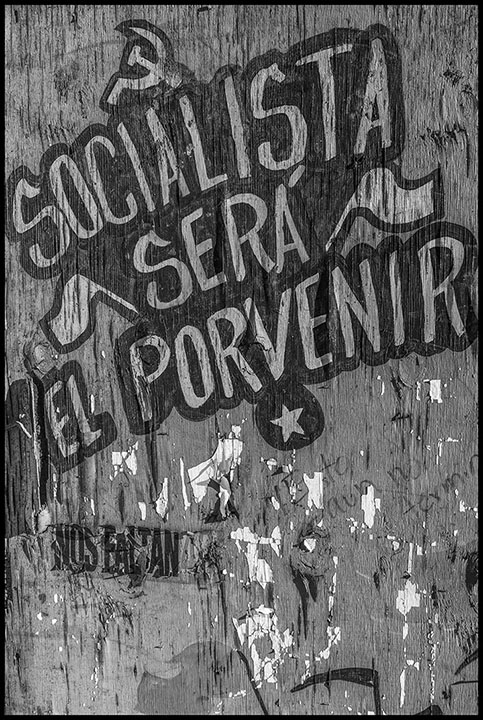  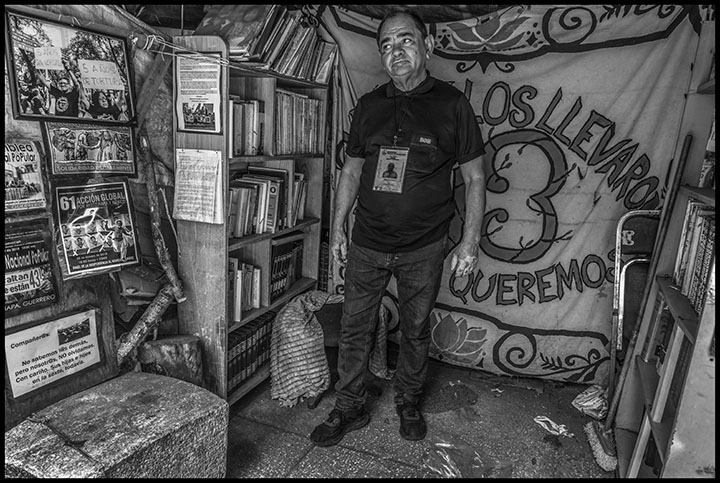 Perhaps the Ayotzinapa encampment, and the Glorieta de las Mujeres que Luchan (the Roundabout of the Women in Struggle) are products of a certain political moment. But perhaps they will become as much a part of the recognized life of the city as the Angel of Independence, the column that has towered over the Reforma since 1910, the first year of the Mexican Revolution. The two occupations of public space each mark their own watershed in Mexican politics, and that change, with or without memorials, will perhaps last decades as well. PHOTO EXHIBITIONS / EXPOSICIONES DE FOTOS IN THE FIELDS OF THE NORTH / EN LOS CAMPOS DEL NORTE Photographs by David Bacon 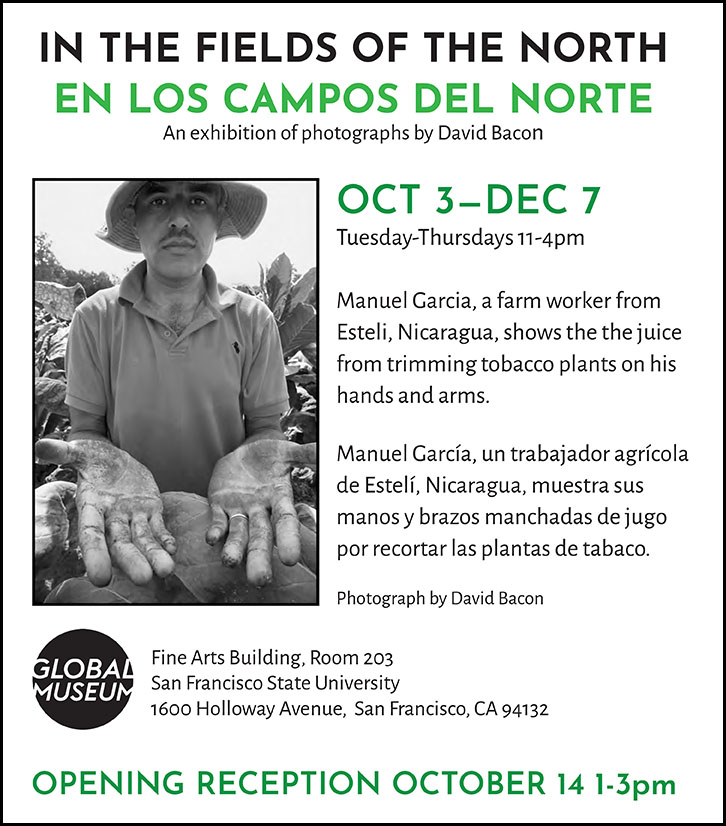 Global Museum Fine Arts Building Room 203 San Francisco State University 1600 Holloway Avenue San Francisco, CA October 3 - December 7, 2023 Tuesday - Thursday, 11-4 PM Opening Reception October 14, 1-3 PM MAS QUE UN MURO / MORE THAN A WALL Photographs by David Bacon / Fotografias por David Bacon 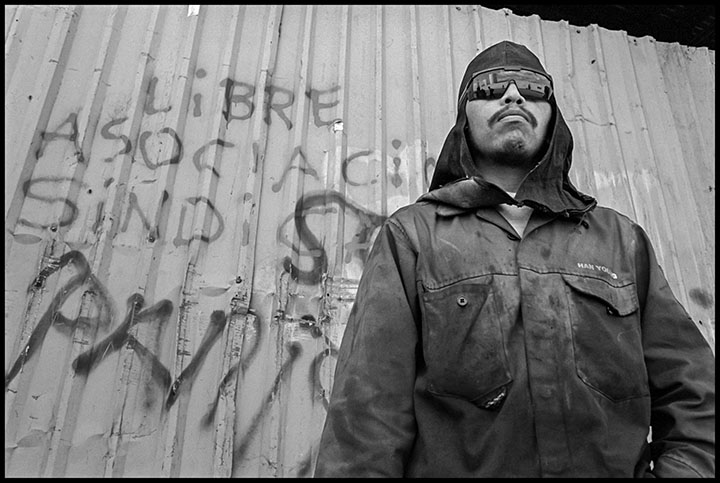 International Meeting on Human Mobility 2023 Encuentro internacional sobre movilidad humana 2023 Museo Nacional de las Culturas del Mundo Palacio Nacional Moneda 13, Centro Histórico Centro, Cuauhtémoc 06000 Ciudad de México CDMX, Mexico Through October, 2023 WHEN WE SPOKE OUT AGAINST WAR Unearthing the history of protest against the wars in Iraq and Afghanistan Photographs © by David Bacon https://www.flickr.com/photos/56646659@N05/52759801492/in/album-72177720306862427/ BOOKS - LIBROS MORE THAN A WALL / MAS QUE UN MURO 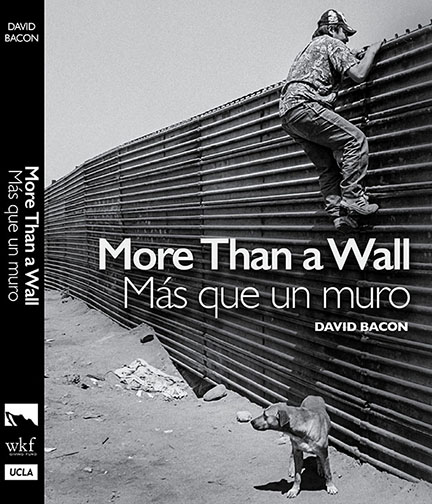 More Than a Wall / Mas que Un Muro explores the many aspects of the border region through photographs taken by David Bacon over a period of 30 years. These photographs trace the changes in the border wall itself, and the social movements in border communities, factories and fields. This bilingual book provides a reality check, to allow us to see the border region as its people, with their own history of movements for rights and equality, and develop an alternative vision in which the border can be a region where people can live and work in solidarity with each other. - Gaspar Rivera-Salgado David Bacon has given us, through his beautiful portraits, the plight of the American migrant worker, and the fierce spirit of those who provide and bring to us comfort and sustenance. -- Lila Downs Published by El Colegio de la Frontera Norte with support from the UCLA Institute for Labor Research and Education and the Center for Mexican Studies, the Werner Kohlstamm Family Fund, and the Green Library at Stanford University Price: $35 plus postage and handling To order, click here: https://david-bacon-photography.square.site/product/more-than-a-wall-mas-que-un-muro/1?cp=true&sa=true&sbp=false&q=false "The "border" is just a line. It's the people who matter." - JoAnn Intili, director, The Werner-Kohnstamm Family Fund IN THE FIELDS OF THE NORTH / EN LOS CAMPOS DEL NORTE 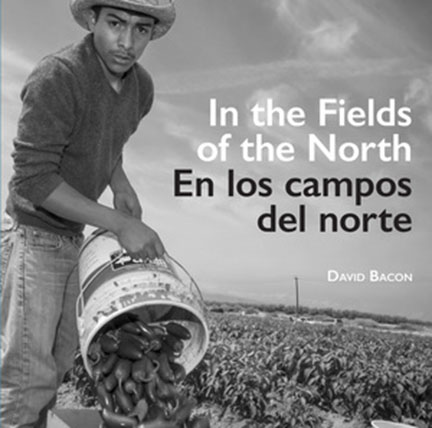 Photographs and text by David Bacon University of California Press / Colegio de la Frontera Norte 302 photographs, 450pp, 9”x9” paperback, $34.95 (in the U.S.) order the book on the UC Press website: ucpress.edu/9780520296077 use source code 16M4197 at checkout, receive a 30% discount En Mexico se puede pedir el libro en el sitio de COLEF: https://www.colef.mx Los Angeles Times reviews In the Fields of the North / En los Campos del Norte - click here 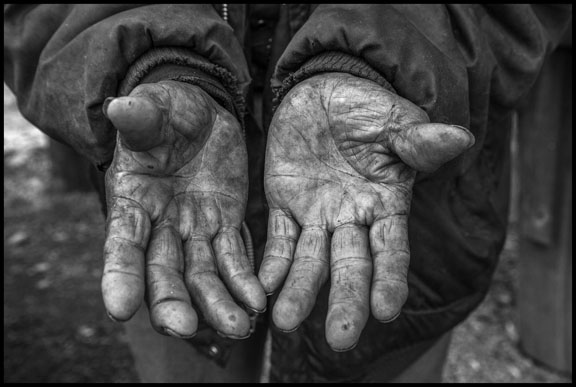 WORK AND SOCIAL JUSTICE: The David Bacon Archive exhibition at Stanford Libraries https://exhibits.stanford.edu/bacon/browse Exhibited throughout the pandemic in the Cecil H. Green Library at Stanford. The online exhibition (https://exhibits.stanford.edu/bacon), which includes additional content not included in the physical show, is accessible to everyone, and is part of an accessible digital spotlight collection that includes significant images from this body of work. For a catalog: (https://web.stanford.edu/dept/spec_coll/NonVendorPubOrderform2017.pdf) Red Lens Episode 6: David Bacon on US-Mexico border photography Brad Segal: On episode 6 of Red Lens, I talk with David Bacon. David Bacon is a California-based writer and documentary photographer. A former union organizer, today he documents labor, the global economy, war and migration, and the struggle for human rights. We talk about David's new book, 'More than a Wall / Mas que un muro' which includes 30 years of his photography and oral histories from communities & struggles in the U.S.-Mexico border region. https://www.youtube.com/watch?v=Nvs6SyXsM-4 Host Mitch Jeserich interviews David Bacon, a photojournalist, author, broadcaster and former labor organizer. He has reported on immigrant and labor issues for decades. His latest book, More Than A Wall, is a collection of his photographs of the border and border communities spanning three decades. Exploitation or Dignity - What Future for Farmworkers UCLA Latin American Institute Based on a new report by the Oakland Institute, journalist and photographer David Bacon documents the systematic abuse of workers in the H-2A program and its impact on the resident farmworker communities, confronted with a race to the bottom in wages and working conditions. https://www.youtube.com/watch?v=UXKa2lHJXMs David Bacon on union solidarity with Iraqi oil worker unions Free City Radio - CKUT 27/10/2021 - https://soundcloud.com/freecityradio/oct-27-2021-ckut-27102021-david-bacon-on-union-solidarity-with-iraqi-oil-worker-unions Organizing during COVID, the intrinsic value of the people who grow our food Sylvia Richardson - Latin Waves Media How community and union organizers came together to get rights for farm workers during COVID, and how surviving COVID has literally been an act of resistance. https://latinwavesmedia.com/wordpress/organizing-during-covid-the-intrinsic-value-of-the-people-who-grow-our-food/ Report Details Slavery-Like Conditions For Immigrant Guest Workers Rising Up With Sonali Kohatkar https://www.oaklandinstitute.org/report-details-slavery-conditions-immigrant-guest-workers The Right to Remain http://www.franknews.us/interviews/415/the-right-to-remain Beware of Pity http://www.franknews.us/interviews/525/beware-of-pity En Español Ruben Luengas - #EnContacto Hablamos con David Bacon de los migrantes y la situación de México frente a los Estados Unidos por ser el principal país de llegada a la frontera de ese país. https://rubenluengas.com/2021/03/video-mexico-estados-unidos-migracion-y-suenos-rotos-encontacto/ Jornaleros agrícolas en EEUU en condiciones más graves por Covid-19: David Bacon SomosMas99 con Agustin Galo Samario https://www.youtube.com/watch?v=YWQSvM9s1lw "Los fotógrafos tomamos partido" Entrevista por Melina Balcázar Moreno - Milenio.com Laberinto http://www.milenio.com/cultura/laberinto/david_baconm-fotografia-melina_balcazar-laberinto-milenio_0_959904035.html David Bacon comparte su mirada del trabajo agrícola de migrantes mexicanos en el Museo Archivo de la Fotografia http://www.cultura.cdmx.gob.mx/comunicacion/nota/0038-18 Online Photography Exhibitions Documentary Matters - View from the US Social Documentary Network Four SDN photographers explore themes of racial justice, migration, and #MeToo https://www.youtube.com/watch?v=fWl-uENA7SQ&t=1641s There's More Work to be Done Housing Assistance Council and National Endowment for the Arts This exhibition documents the work and impact of the struggle for equitable and affordable housing in rural America, inspired by the work of George “Elfie” Ballis. https://www.thereismoreworktobedone.com/david-bacon Dark Eyes A beautiful song by Lila Downs honoring essential workers, accompanied by photographs https://www.youtube.com/watch?v=bdC2gE3SNWw A video about the Social Justice Photography of David Bacon: https://drive.google.com/file/d/14TvAj5nS08ENzWhw3Oxra4LMNKJCLF4z/view In the FIelds of the North Online Exhibit Los Altos History Museum https://www.losaltoshistory.org/exhibits/in-the-fields-of-the-north/ Virtual Tour - In the Fields of the North History Museum of Tijuana Recorrido Virtual de la Exposicion - En los campos del norte Museo de Historia de Tijuana https://www.facebook.com/542258639265202/videos/659536991515786 THE REALITY CHECK - David Bacon blog Other Books by David Bacon - Otros Libros Illegal People -- How Globalization Creates Migration and Criminalizes Immigrants (Beacon Press, 2008) | |
Copyright © 2023 David Bacon Photographs and Stories, All rights reserved. you're on this list because of your interest in david bacon's photographs and stories Our mailing address is: David Bacon Photographs and Stories address on request Oakland, Ca 94601 | |